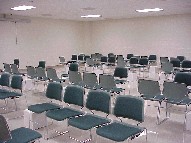
Theatre behind bars allows prisoners all the benefits of what art allows any of us — and added to that — it gives prisoners a chance to have access to a world they’ve often felt excluded from — a world that education gives them access to. All studies done on prisoners show that the more education you have, the more likely you are to stay out of prison. Education = less crime. Except maybe in the case of bankers and politicians. And guess what? READING SHAKESPEARE IS EDUCATION.
Sorry I had to yell. But that’s part of why I couldn’t believe it when I heard that University of Wisconsin Professor, Jonathan Shailor, had been told he could not continue his Shakespeare Program in prison. Like me, Shailor has had the joy of watching people behind bars change, read more to their kids, get into college after they get out or hold down steady jobs. He began his program in 2004; had a hiatus; and this year had a grant to begin again.
He was told–okay hold onto your seats — by the Department of Correction — and they do not correct much as far as I can see — he was told that his Shakespeare program did not fit the definition of an “evidence-based practice.”
(Take breath, Jean) So I know that “evidence-based” is the new hot term in many pools I dip my toe in — education, criminal justice, medicine — BUT reading and studying Shakespeare is not evidence-based? Performing plays is not evidence-based? All you have to do is read one of many studies, anecdotal or hard studies, some that I am sure Jonathan provided to the prison. All you have to do is READ.
I have to say that it’s a crime not to know how arts change lives. Maybe the Wisconsin officials should have read Jonathan’s book that I was happy to be a part of Performing New Lives, where practitioners of theatre in prison all across the country talk about the amazing men and women who transform themselves through the arts.
Or they could watch this amazing video to see that there’s “evidence” in these photos: Somebody Teach me to Embed a Video

 which would not be so bad since you are at least facing the person or people who are visiting you (overlooking the fact that the prisoner is the one marked in scarlet letter tones.)
which would not be so bad since you are at least facing the person or people who are visiting you (overlooking the fact that the prisoner is the one marked in scarlet letter tones.).jpg) which also has some potential for not killing your neck and actually hearing a conversation. No, visiting is more like what Jim Ridgeway describes in his fabulous article about medical parole in
which also has some potential for not killing your neck and actually hearing a conversation. No, visiting is more like what Jim Ridgeway describes in his fabulous article about medical parole in  Although in Oregon, at least prisoners can sit close enough to talk across the aisle. Here, we strap in, sit back and forget having a real conversation.
Although in Oregon, at least prisoners can sit close enough to talk across the aisle. Here, we strap in, sit back and forget having a real conversation.